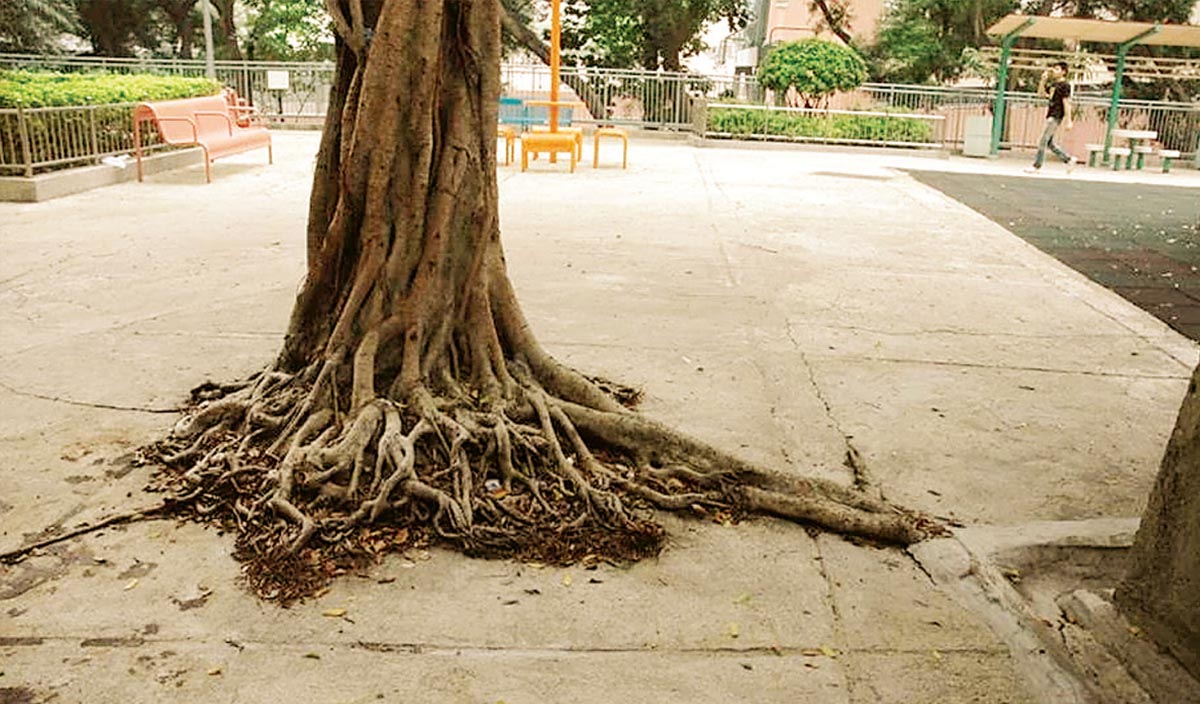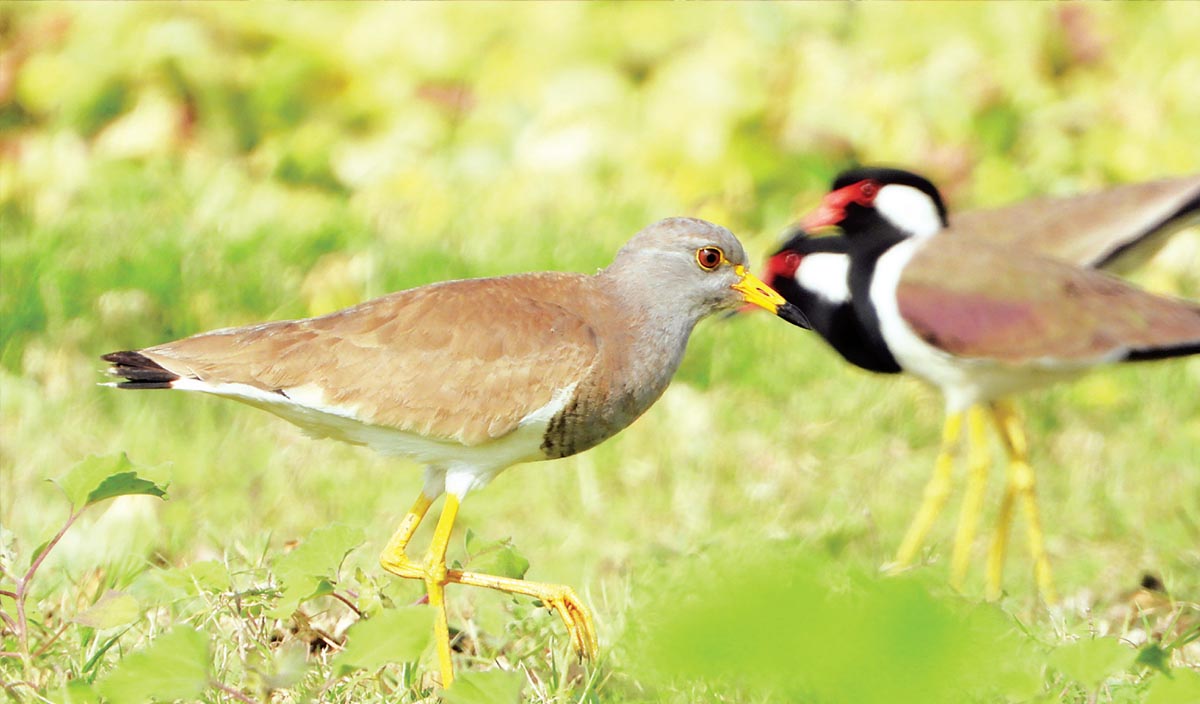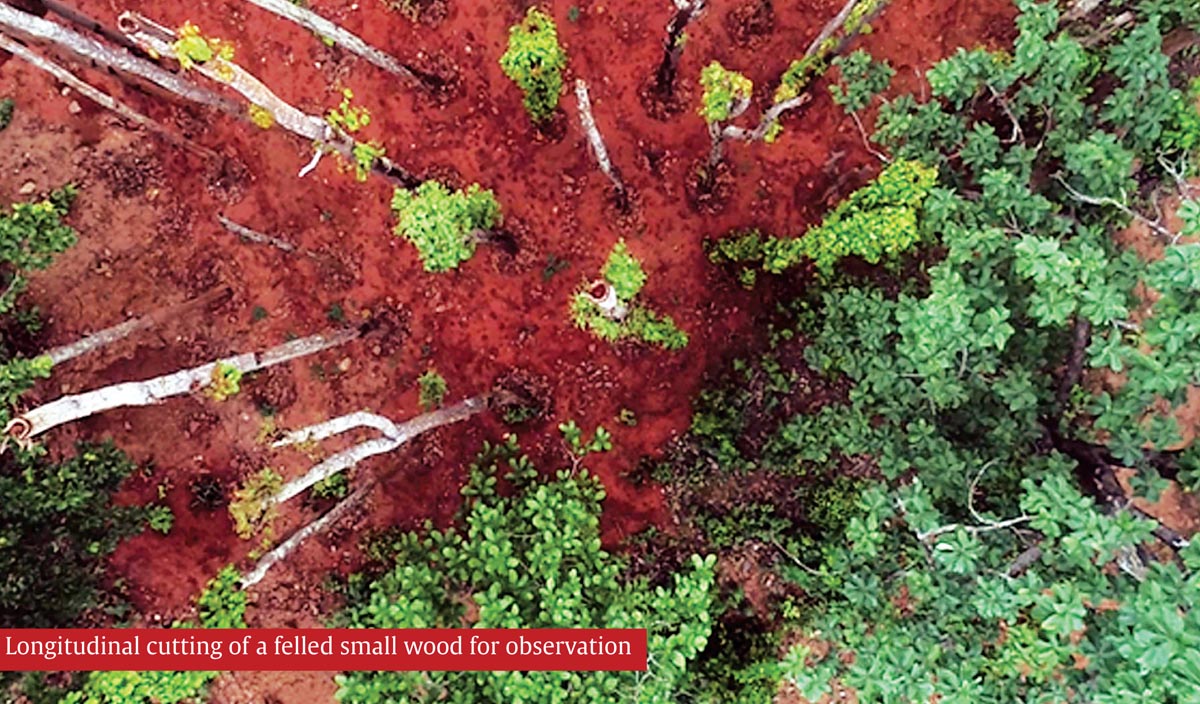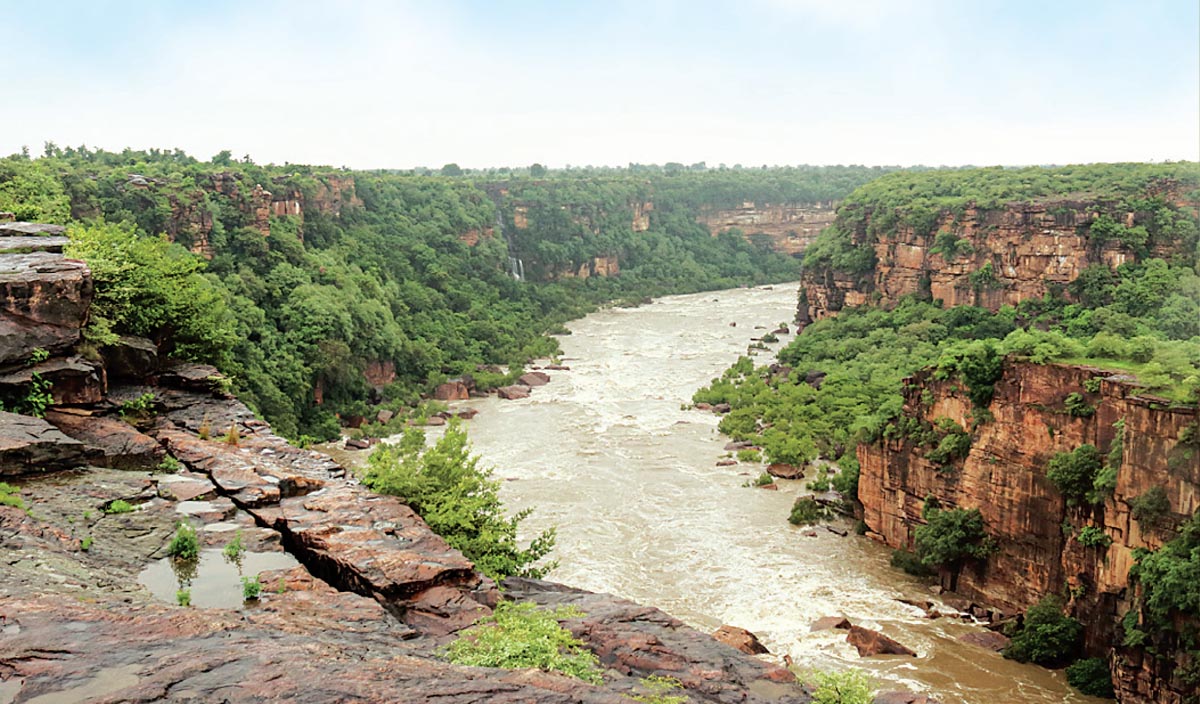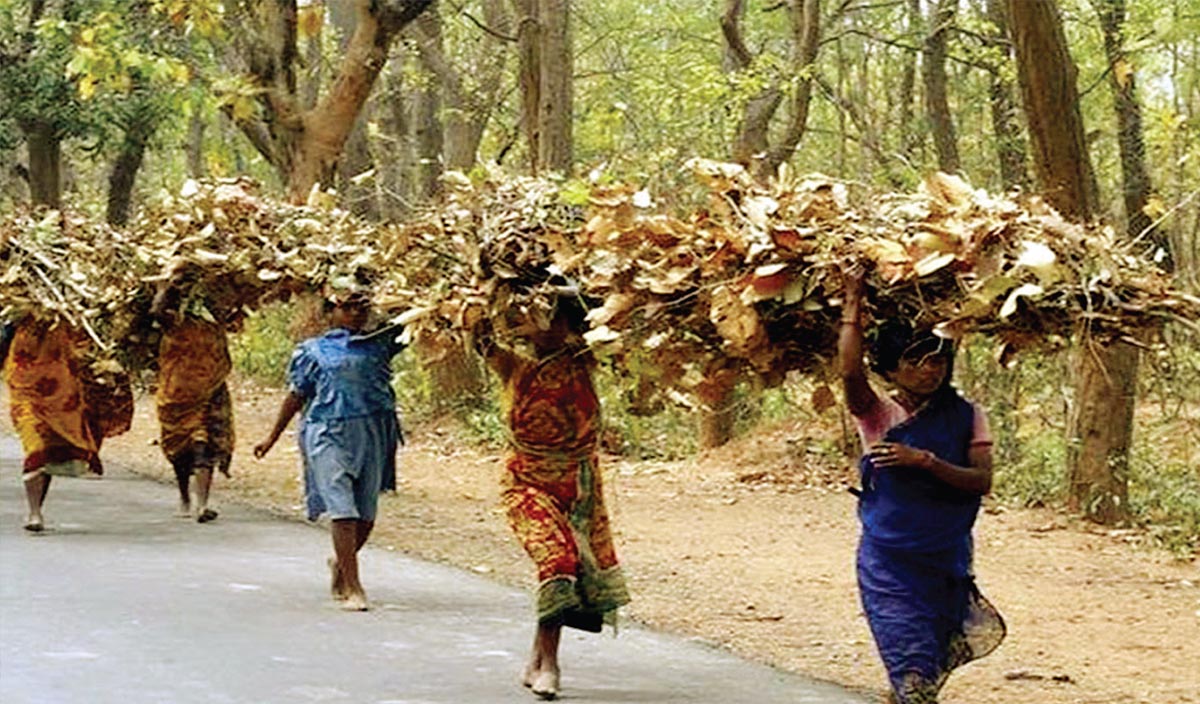
Participation of women in Natural Resource Management
By Anubha Srivastav and Anita Tomar
Natural Resource Management (NRM) means the management of resources such as land, water, forest, plants and animals, with a particular focus on how management affects the quality of life for both present and future generations. Without access to resources, there cannot be enough incentive for sustainable NRM and consequently rural development is curtailed (Babu and Nautiyal, 2015). ). A sustainable practice for management of natural resources to meet the need of life for both the present and future generations is of crucial concern to all societies (Belay, 2016; Agarwal, 2010).
Women are frequently responsible for firewood collection and fetching water, generate substantial income for the family tems; as such their experiences and perspectives are essential to sustainable development. By imparting knowledge about the importance of preserving natural habitats and ecosystems, women empower communities to take proactive measures to mitigate threats such as deforestation, habitat destruction and pollution. budget from sale of handicrafts, a variety of grown and wild foods, firewood and other products, and care for their children and homesteads. To accomplish their tasks, women are, formally or informally, resource managers (Chen and Ravillion, 2008). Their indigenous knowledge, strat egies and roles in conserving and using various plant and animal species found in different ecosystems are very crucial to sustain the environment, their households’ livelihoods, and those of their communities (Khadka and Verma, 2012).
In communities around the world, women manage water, sources for fuel, and food. They also manage both forests and agricultural land. Women’s workload is often centered on managing natural resources, biodiversity and ecosys Natural resources constitute the fundamental base for all human activities. It is a most important natural resource of a country like India where agriculture sector is relatively more prominent than the manufacturing sector. The way and the extent to which the land is utilized set the pace of a country’s economic development. Hence, the proper utilization of land according to its use, capability should be the prime concern of its people. Land is important not only for producing foodstuffs, cereals, fruits and vegetables for consumption but also for generating surpluses to meet the increasing demands created by rising population and developing industrial sector, for laying down the transport net work, communication and flow lines, for the construction of dwelling and public institution etc.
According to the land use statistics, only 92.5 percent of the total geographic area (32.87 core hectare) of the country is reported for land utilization, out of the total reported land, about 51.09 % is occupied by the net sown area, 3.92 % under pasture and 21.81 % lies under forests (www.desagri.gov.in). The barren and uncultivable land shares about 9% while the proportion of land under non-agricultural use measures to about 5 %. The area under cultivable waste, permanent pastures and grazing and tree crops and groves approximate to about 5, 4 and 0.1 present respectively. A large tract of land is physically handicapped by the problems of soil erosion, salivation, water logging, deserts, mountains hills etc. of the total land area of India about 10.7% is occupied by the mountains, 18.6 present by the hills, 27.7 present by the plateaus and about 43% is shared by the plains.
The phenomenon of underutilization and improper utilization of land has a direct bearing on the agricultural sector and on the rural economy and society. The agricultural production and productivity are adversely affected and are kept at very low level as is the case today. Hence, the maximum and full utilization management and conservation of land resources should constitute the pith and crop of our development planning. In view of the present scenario, to manage our land use plans in right direction, it is needed to consider people’s participation at regional and local level. When the question of people’s participation arises, definitely the role of women in land management is very important. The role of Indian women as it has evolved, been experienced and understood over 4000 years, has been intertwined with the history of the country. It is rightly said in the words of Pt. Jawaharlal Nehru “In order to awaken the people, it is the women who have to be awakened. Once she is on move, the family moves, the village moves, the nation moves”.
Participation in land and water management
Women play an important role in land and water management. They are most often the collectors, users and managers of water in the household as well as farmers of irrigated and rain-fed crops. Because of these roles, women have considerable knowledge of water resources, including quality and reliability, restrictions, and acceptable storage methods. Women farmers, using traditional methods, have been effective in conserving soil fertility. Given access to appropriate resources, they practice fallowing, crop rotation, intercropping, mulching and a variety of other soil conservation and enrichment techniques.
Over the years, rural women have developed practices for the efficient and sustainable use of the resources available to them. For these reasons it is important to build upon and enhance their skills in land and water management strate gies and involve them in protecting and sustaining land and water resources. Privatization, population pressure and the dissolution of customary land tenure have reduced the amount and quality of land available to rural communities. More and more people are obliged to use land ill-suited to continuous cultivation. This increases the rate of environmental degradation and deprives them of their livelihoods. Land is one of the most vital natural resources for people and it partly determines the volume of output and the status of a farmer in the social setting of the society. It is a store house for minerals and forest resources of various kinds. This kind of natural capital is mostly controlled by men, while women have limited power to control the resource and have also limited or no access to external inputs such as extension, fertilizer and credits.
Insecure land tenure reduces people’s incentives to maintain soil quality because they have no permanent rights to the land. Access to land affects both men and women. In areas where it is restricted, however, women face the added difficulty of having their requests for land mediated through men. Even the use of small plots must be granted by a husband, inherited from a father or requested from male village elders. If women have their own plots, they are usually small, dispersed, remote and less fertile.
In areas with a high divorce or abandonment rate and where land remains with men in the case of separation, women are reluctant to invest time and resources into long-term land improvements such as building irrigation or drainage systems, terracing, planting tree crops or other activities that maintain soil fertility. It was reported by UN-Women (2014), the proportion of rural women were affected by water scarcity, for example, is estimated at 55% in Africa, 32% in Asia, and 45% in Latin America, with the median time for collecting water in the dry season at 1.6 h per day. If water resources are scarce, it affects both men and women negatively with less productivity. At the same time, it affects women and children more with more workload and drudgery and poorer nutrition as compared to men and boys (Abate, 2020).

When women do not own land, they often have no access to agricultural support services such as credit with which to purchase inputs, to training in land and water development, or to water resources for irrigation. In many cases, water resource policies and programmes have proven detrimental to women’s land and water rights and thus to their sustainable management and use. Interventions such as irrigation often fail to take into consideration the existing imbalance between men and women’s ownership rights, division of labour, and incomes. Irrigation raises the value of the land, bringing about social change which usually favours men. In addition, irrigation systems may favour mono-cropping, often for the production of cash crops, and thus may exclude provisions for a more diversified cropping pattern supporting a variety of food crops. Cash crops are usually controlled by men and decisions regarding the scheduling of irrigation water tend to be made without consideration for women’s productive and reproductive activities.
Women must be involved in policymaking and planning to ensure the most productive and efficient use of land and water resources to meet present and future food and agricultural demands. Women farmers need to be part of the planning and implementation of land and water management programmes, with full access to inputs and organizational arrangements. Equally important is the increased participation of women in training and extension activities that deal with soil resources and land-use planning, and in water conservation and development. Women constitute 48% of Indian population. The mandate for equal rights for men and women is embedded in India’s Constitution. Gender equality, which is more than equal rights, is a constituent of development as well an instrument of development. It is a constituent of development in that no country can be deemed developed if half its population is severely disadvantaged in terms of basic needs, livelihood options, knowledge access, and political voice. It is an instrument of development because without gender equality other goals of development will also be difficult to achieve, namely the goals of poverty alleviation, economic growth, environmental sustainability, and so on.
At one level, poverty exacerbates gender disparities. Inequalities between girls and boys in access to schooling or adequate health care are more acute among the poor than among those with higher incomes. These disparities disadvantage women and girls and limit their capacity to participate in and benefit from development. At another level, gender inequalities hinder development, and ignoring gender disparities comes at great cost-to people’s well-being and to the country’s abilities to grow in a sustainable manner, to govern effectively, and thus to reduce poverty. To enhance development effectiveness, gender issues must be an integral part of policy analysis, design, and implementation. Women are almost half of the adult population. They constitute one- third of labour force but consume two third of the world’s working hour and yet earn only one tenth of the income and own only one percent of the world proper
ty. Like many other countries, India lacks adequate quantitative data on women in agriculture and other land management. Farm women constitute so significant part of the working women population in our country, that it necessitates a further understanding of their status and role not only as they now are but as they may be developed in future.
The rural women and land resource (waste land, agriculture land, forest land etc.) are inextricably linked. Disadvantaged group like the tribal and rural women are severely affected by the degradation of forest resources for food,fodder, fuel, shelter, medicine, clear drinking water etc. Throughout the Indian subcontinent, women play a substantial role in fuel and fodder collection, livestock rearing and agriculture, regardless of whether they are or are not member of female headed households. In spite of this reality, the trend in the past has been their negligence in most forestry schemes and they have remained under-represented in the decision making and extension processes. It is postulated that a family can be better developed and brought above the poverty line through a focus on women in the programs related to community participation in land resources management.
Participation in forest management
The denudation of forests is a common phenomenon all over India. It is now an accepted fact that it will be impossible for the government to protect and develop the forest without the active involvement of the local population. The forest policy emphasized environmental protection & conservation and meeting the requirement of fuel wood, fodder, minor forest produce and small timber of the rural and tribal population and creating a massive people’s movement with the involvement of women for achieving these objectives.
The involvement of local people in forest land management is sometimes perceived as an end in itself. The approach instead should be a part of the process in resource generation rather than only sharing in benefits. Forest management has a better chance of success if it is in tune not only with socio cultural needs of local communities but also takes into account the role of women in community and family economies. In the traditional rural economy, women have been playing increasingly important.


Moreover, it is the women who are primarily responsible for collecting fuel wood. Men are therefore frequently isolated from the problems which arise if its supply becomes scarce. This has been suggested as an important reason why men are often concerned about fuel scarcity problems and indifferent to suggestions that they should plant more trees which can yield fuel wood quickly.
The salient dimensions of women participation are:
- They create supportive incomes in areas of wages earning.
- In subsidiary section, they are also involved in agriculture especially in lighter manual work viz., paddy transplantation etc.
- In some parts, particularly in hill regions and in tribal lands of the industrial areas, they are becoming effective family decision makers. An increasing member of men are migrating away from small holdings with consequence that there is a growing number of women headed rural households.
- Women have to travel as much as 15 km in some areas to collect fuel wood and potable water.
The women are employed at various levels of hierarchy in forestry sector. Since much of the biotic damage viz. lopping, cutting of trees, breaking of forest land for cultivation etc. is being done by women. Their apprehension by male staff is fraught with complications, forest patrolling by female forest guards is likely to be more effective.
The recruitment of female staff in state forest department is an appreciating step. Equality of women in every sense of the term is necessary not merely on the grounds of social justice but as a basic condition for their social, economic and political enhancement as also for promotion of their independent status and for improvement in their employment opportunities and earning capacity. Society owes a special responsibility to women because of their child bearing role.
The housewife’s contribution to earning and management of the land resources is admittedly productive both economically and socially and contributes to national saving and development.

The saying “take care of the people and the trees will take care of themselves” is appropriate guidance for the poverty and waste land problems of India. The role of women is dictated by the cultivar and traditions of a community. Even within a village, the tasks entrusted to and performed by women vary. In quite a few cultures, women not only look after the household but also perform most of the agricultural operations. It is for this reason that chipko was born in Garhwal. It is primarily women who collect firewood and fodder and various non- timber forest products. In waste land development, therefore, considerations of culture and tradition warrant giving, preference to women’s rather than men’s involvement.
Various measures can be adopted by NGO’s in order to enhance the participation of women in forestry programs. In a watershed development project in the Haryana Siwaliks, women in 72 families took the lead and implemented “social fencing”, preventing grazing through social awareness and self feeding.
Another NGO, Doonghtati Shikshan Sansthan in Uttar Pradesh organized plantations of fuel and fodder trees in the foothills with the help of its women’s group. As a result of motivation by this organization, women in the locality have decided not to fell any tree but use only fallen branches and leaves as domestic energy for cooking and heating. Like many other countries, India lacks adequate quantitative data on women in agriculture. Farm women constitute so significant part of the working women population in our country, that it neces sitates a fuller understanding of their status and role not only as they now are but as they may be developed in the future. As such, much additional research is needed before a comprehensive grasp of their distinctive role as human makers and farm workers and the problems they encounter in effectively discharging their responsibilities can be had. However, research has shown that in many contexts, women often have less ownership and access to resources than men, making them more vulnerable to negative changes in the environment to productive resources and opportunities such as land, labour, education, extension, financial services and technology (Mehra and Rojas, 2008).
- The multiple roles of women in agriculture, allied occupations and house hold activities are generally, under estimated and under valued.
- The nature and extent of women’s involvement in agricultural and non-agricultural activities vary greatly from region-to-region and even within a region; it varies widely among different farming system and socioeconomic status group of families.
In forests, common property resources make up about 12% of poor households’ income; fuel and fodder being the most important CPRs accessed by the poor, and women and girls are mainly responsible for collection of CPRs. (Beck and Ghosh, 2000). However, the role of women in formulating management policies is ignored. There is a growing belief that greater involvement of women is essential in dealing with management crisis. Government officials, Funding agencies and NGO’s are realising that management programmes that involved women have been far more successful than those were women had no role to play. This process of involving women, however, needs to be taken further by viewing women as more than mere ‘beneficiaries’ of management programs. Rarely women are asked what they think. Women have to be involved in the entire process of designing and implementation of the management programmes. Indeed, gender encompasses men as well as women and both have complementary roles to play in all social processes, including managing the natural resources. Gradually the rural woman is coming out of her shell and participating in development efforts including forest management, as during Chipko movement (1973), which revealed the strength of women in public sphere. Women have a more vital role in socioeconomic development, in amelioration of environment and in ensuring a more equitable distribution of income and decision-making powers. Through effective involvement of women in management of village common lands and the natural resources the prosperity and existence of the nation and its future generation can be ensured.
Conclusion
There is now a need to arrive at a meaningful convergence of their various roles- that of being a traditional ‘bahu’ of being a social asset to the husband, and of carrying a career for herself. Indian women at this juncture get caught up in the dilemma of whether or not to choose the familiar road with its land marks of sati, sita and savitri. They get caught in the iron shape of the social system which demands a price that they surrender their existential being so as to acquire a role based security. They have had the courage and the conviction to choose the road of adventure, to discover the vicissitudes of their existence and to grapple with the arodous process of discoveringan integrated identity which includes the multiple facets of social and work roles. In sum, it is believed that women are often victims of their own restricted vision, and Indian women still have to discover a third identity which is neither male nor female but human. This identity encompasses the other two identities and is a liberating and life giving force which can revitalize not just women but society at large. It is rightly said in words of Swaminathan “some historians believe that it was the women who first domesticated crop plants and thereby initiated the art and science of farming women have who played and continue to play a key-role in the conservation of basic life support systems such as land, water, flora and fauna. Without the total intellectual and physical participation of women, it will not be possible to popularize alternative system of land management to shifting cultivation, arrest gene and soil erosion.
Readings
1. Abate, N. (2020). The role of rural women in natural resources management and utilization: A case of Delanta District, South Wollo Zone, Ethiopia, Journal of Ecology and The Natural Environment ,Vol. 12(3), pp. 104-116, DOI: 10.5897/JENE2018.0716 Article Number: 0BAE61464443 ISSN 20069847
2. Agarwal, B. (2010). Gender & green governance: The political economy of women’s presence within and beyond community forestry. Oxford University Press.
3. Babu, M.S.U., and Nautiyal, S. (2015). Conservation and management of forest resources in India: Ancient and Current Perspectives. Natural Resources 6:256-272. http://dx.doi.org/10.4236/ nr.2015.64023.
4. Beck, T. and Ghosh, M.G. (2000). Common property resources and the poor: findings from West Bengal. Economic and Political Weekly, 35(3): 147-153.
5. Chen S, Ravillion M (2008). The developing world is poorer than we thought but no less successful in the fight against poverty. World Bank Policy Research Working Paper 4703. World Bank.
6. Khadka, M. and Verma, R. (2012). Gender and Biodiversity Management in Greater Himalayas:Towards EquitableMountain Development.’ Kathmandu: ICIMOD.
7. Mehra, R. and Rojas, M.H. (2008). Women, food security, and agriculture in a global marketplace. International Center for Research on Women.
8. Srivastav, A.(2024). Demand supply gap analysis of agroforestry species in vindhyan region of eastern UP, Project completion report, ICFRE, Dehradun
9. TERI (2020).Women in agriculture: Enhancing their role and promoting sustainability and livelihood support.
10.United Nations Women (2014). The World survey on the role of women in development 2014: Gender equality and sustainable development.
11. www.desagri.gov.in
Related Posts
Strangulation by cementing is the silent killer of trees in urban environments
Strangulation by cementing is the silentkiller of trees in urban environments By Sundararaj R, Swetha…
Guardians of Grey Headed
Guardians of Grey Headed Observations by CA. Shomi Gupta & Yogesh More The Grey Headed…
Tree Translocation of 1000 trees in Balliguda Forest Division
Tree Translocation of 1000 trees in Balliguda Forest Division By Vishwanath Neelannavar, IFS As per…
Vulture – A lost magnificence
Vulture – A lost magnificence By Nitish Agrawal Madhya Pradesh has a rich diversity of…

